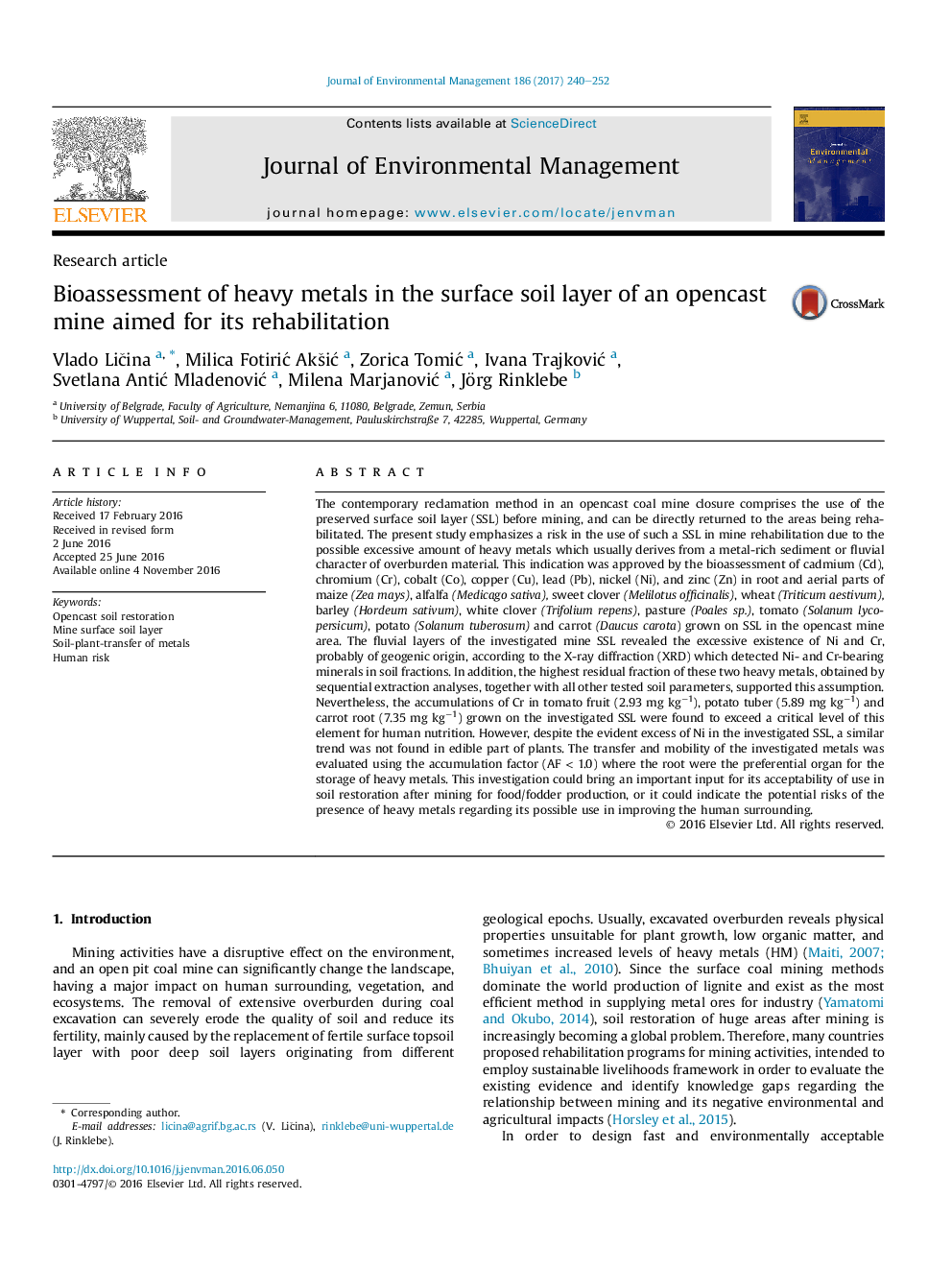| کد مقاله | کد نشریه | سال انتشار | مقاله انگلیسی | نسخه تمام متن |
|---|---|---|---|---|
| 5117424 | 1378125 | 2017 | 13 صفحه PDF | دانلود رایگان |
- Ni and Cr in mine surface soil layer seem to be of geogenic origin.
- Plant organs and species showed a great variation in heavy metal accumulation.
- Heavy metals were particularly accumulated in roots of agricultural plants.
- Tomato, carrot, and potato are most sensitive to high metal exposure.
The contemporary reclamation method in an opencast coal mine closure comprises the use of the preserved surface soil layer (SSL) before mining, and can be directly returned to the areas being rehabilitated. The present study emphasizes a risk in the use of such a SSL in mine rehabilitation due to the possible excessive amount of heavy metals which usually derives from a metal-rich sediment or fluvial character of overburden material. This indication was approved by the bioassessment of cadmium (Cd), chromium (Cr), cobalt (Co), copper (Cu), lead (Pb), nickel (Ni), and zinc (Zn) in root and aerial parts of maize (Zea mays), alfalfa (Medicago sativa), sweet clover (Melilotus officinalis), wheat (Triticum aestivum), barley (Hordeum sativum), white clover (Trifolium repens), pasture (Poales sp.), tomato (Solanum lycopersicum), potato (Solanum tuberosum) and carrot (Daucus carota) grown on SSL in the opencast mine area. The fluvial layers of the investigated mine SSL revealed the excessive existence of Ni and Cr, probably of geogenic origin, according to the X-ray diffraction (XRD) which detected Ni- and Cr-bearing minerals in soil fractions. In addition, the highest residual fraction of these two heavy metals, obtained by sequential extraction analyses, together with all other tested soil parameters, supported this assumption. Nevertheless, the accumulations of Cr in tomato fruit (2.93 mg kgâ1), potato tuber (5.89 mg kgâ1) and carrot root (7.35 mg kgâ1) grown on the investigated SSL were found to exceed a critical level of this element for human nutrition. However, despite the evident excess of Ni in the investigated SSL, a similar trend was not found in edible part of plants. The transfer and mobility of the investigated metals was evaluated using the accumulation factor (AF < 1.0) where the root were the preferential organ for the storage of heavy metals. This investigation could bring an important input for its acceptability of use in soil restoration after mining for food/fodder production, or it could indicate the potential risks of the presence of heavy metals regarding its possible use in improving the human surrounding.
Journal: Journal of Environmental Management - Volume 186, Part 2, 15 January 2017, Pages 240-252
